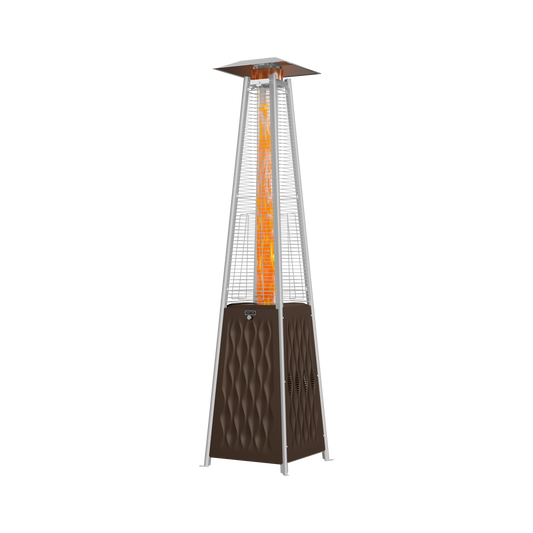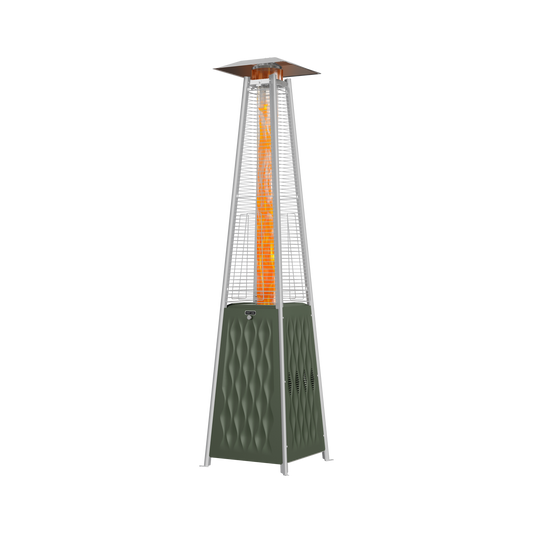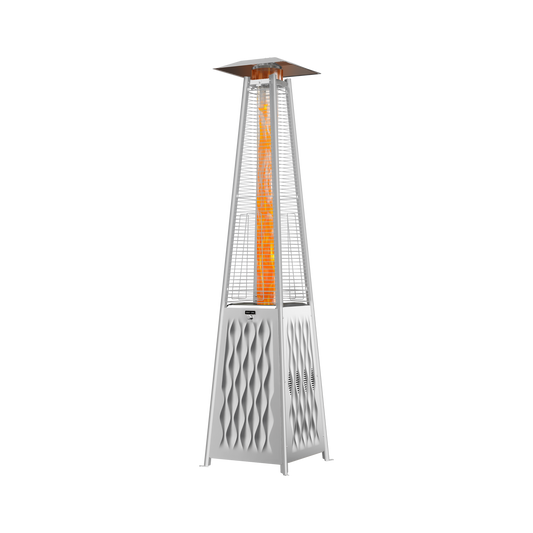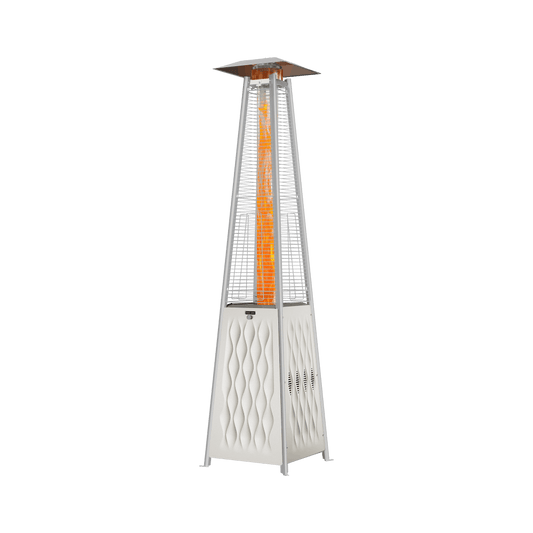







1 x Pyramid Patio Heater
1 x User Manual
General Information
Fuel Type: 20 lbs propane (not included)
BTU Max: 48,000 BTUs
Heat Diameter: 15 ft
Typical Scenario: 4-8 People
Material
Reflector: Aluminum
Burner: 304 Stainless Steel
Size & Weight
Item Size: 35.24x21.85x88.97 inch
Net Weight: 66.1 lbs
Reflector: 32inch
• A dented, rusted, or damaged propane cylinder may be hazardous and should be checked by your cylinder supplier. Never use a propane cylinder with a damaged valve connection.
• The propane cylinder must be constructed and marked in accordance with the specifications for propane gas cylinders of the U.S. Department of Transportation (DOT) or the standard for cylinders, spheres and tubes for transportation of dangerous goods and commission, CAN/CSA-B339.
• The cylinder must have a listed overfilling prevention device. The cylinder must have a connection device compatible with the connection for the appliance. The cylinder used must include a collar to protect the cylinder valve. Never connect an unregulated propane cylinder to the heater.
• The knob on the propane tank must be closed. Make sure that the knob is turned clockwise to a full stop. The cylinder supply system must be arranged for vapor withdrawal. Check that the control knob on the control unit is turned off. Hold the regulator in one hand and insert the nipple into the valve outlet. Be sure the nipple is centered in the valve outlet. The coupling nut connects to the large outside threads on the valve outlet. Hand-tighten the coupling nut clockwise until it comes to a full stop. Firmly tighten by hand only.
To Disconnect: Fully close the tank valve by turning clockwise. Turn the coupling nut counterclockwise until the regulator assembly detaches.
To enjoy years of outstanding performance from your heater, make sure you perform the following maintenance activities half a year:Keep exterior surfaces clean.
1. Use warm soapy water for cleaning. Never use flammable or corrosive cleaning agents.
2. While cleaning your unit be sure to keep the area around the burner and pilot assembly dry at all times. Do not submerge the control valve assembly. If the gas control is submerged in water, do NOT use it. It must be replaced.a. Keep the appliance area clear and free from combustible materials, gasoline, and other flammable vapors and liquids.b. Do not obstruct the flow of combustion and ventilation air.c. Keep the ventilation opening(s) of the cylinder enclosure free and clear from debris.
3. Air flow must be unobstructed. Keep controls, burner, and circulating air passageways clean.Visually checking portions of the hose assembly located within the confines of the heater post. Inspect the entire hose assembly at least annually, disassembling the reflector and burner. Inspect the hose assembly for evid
Free Shipping on Every Order
Enjoy cost-free delivery on every single order. What you see is what you pay, as the price includes quick and free shipping.
Shipping Timeline
In-stock items ship within 2-4 business days. Packages are typically delivered in 2-8 business days after shipment depending on distance.
Shipping Areas
Currently, we do not offer shipping to Alaska, Hawaii, and U.S territories. For any inquiries regarding our shipping policy, please don't hesitate to contact our support team at support@eastoak.com.
Easy Returns & Exchanges, Plus Warranty
Returning or exchanging items is a breeze. If you change your mind within 30 days of purchase and the item is in new, unused condition, you can send it back without worrying about shipping costs. Moreover, most East Oak products come with a 3-year warranty against manufacturing defects and offer lifelong customer support. Find out more in our Return Policy.